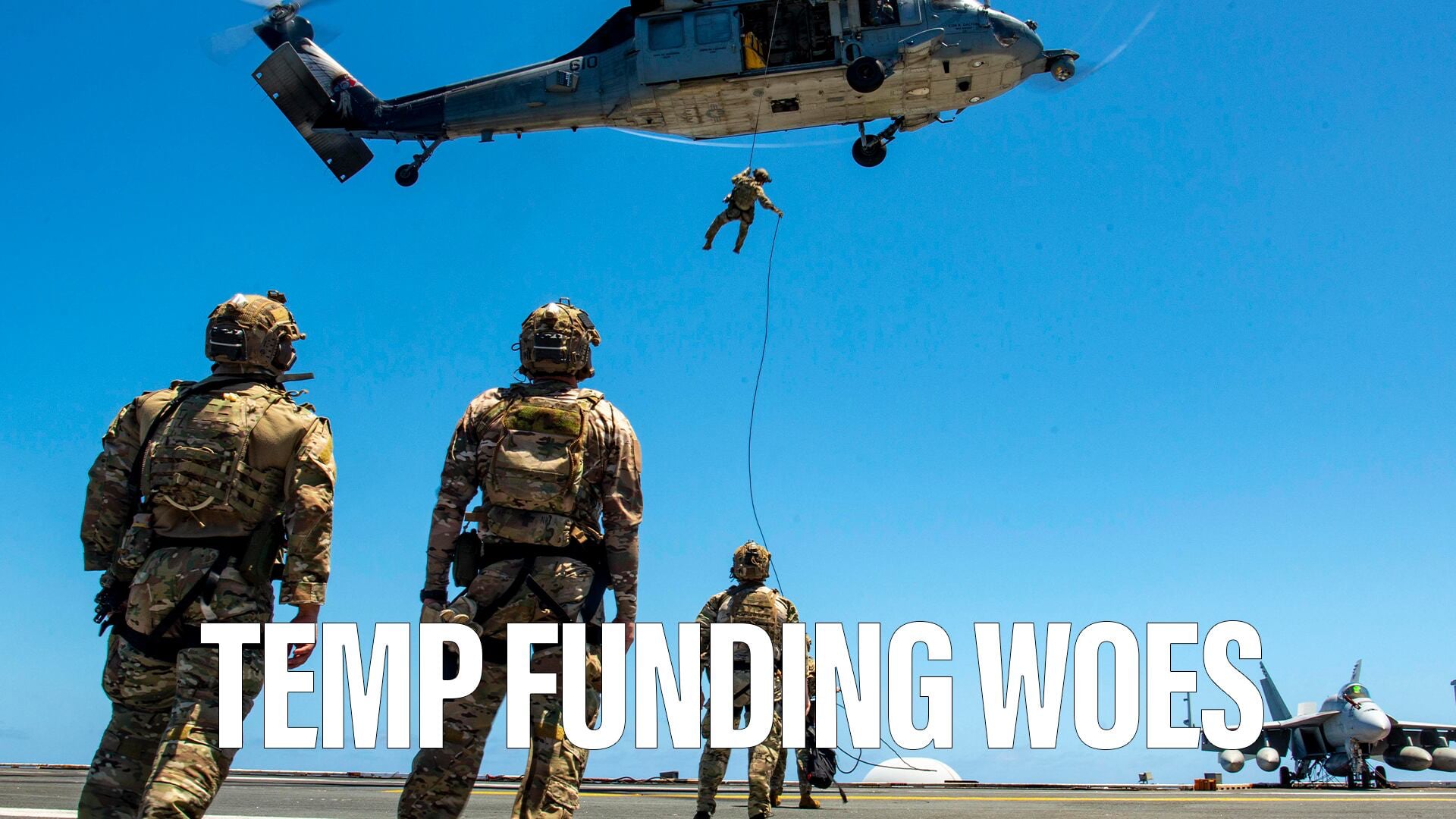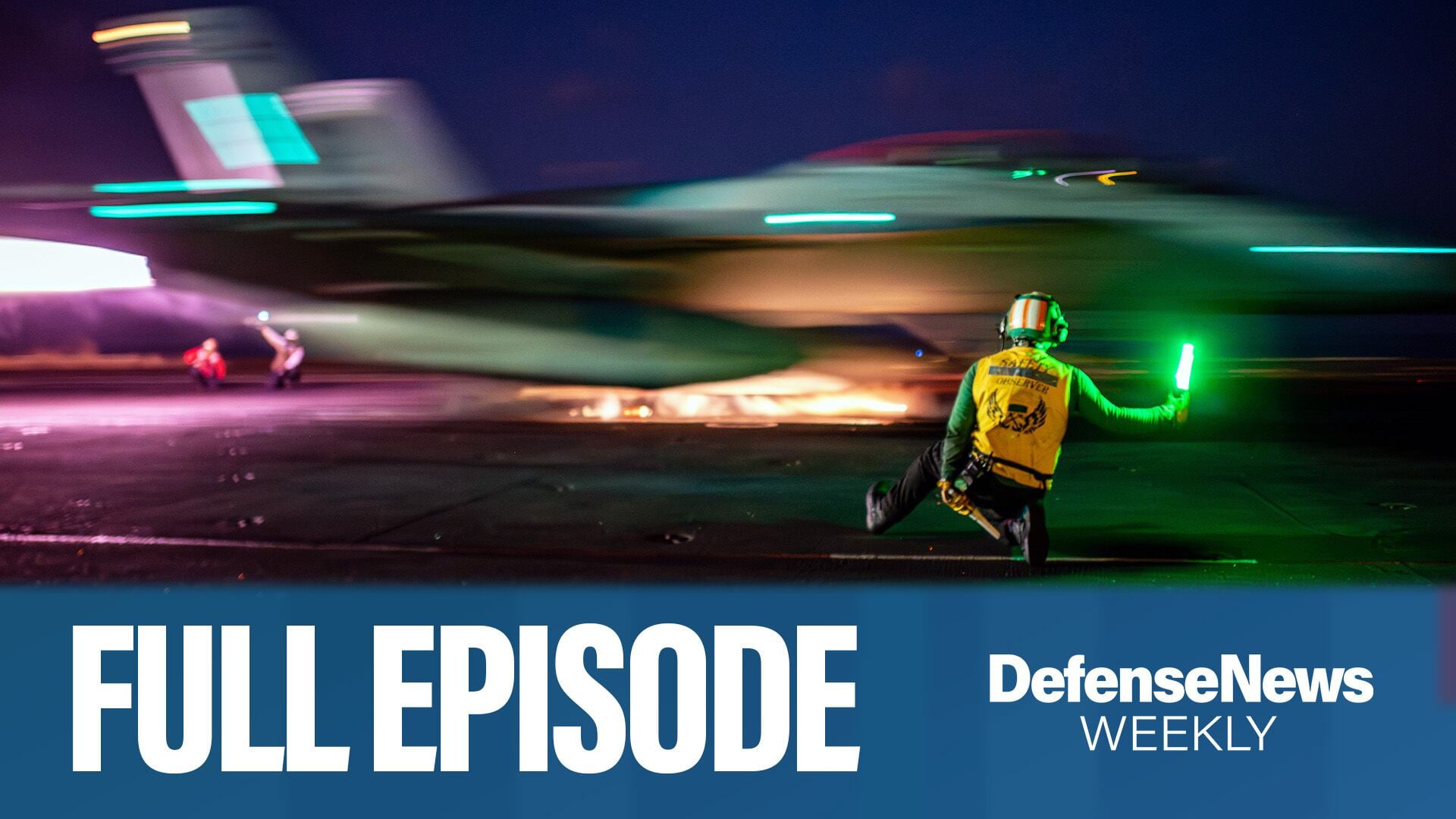The Army has spent the last year increasing the complexity and breadth of its exercises in the Pacific while trying out new capabilities that will soon be a part of formations in the theater. Relationships with Pacific nations have grown amid continuing tensions with China, and U.S. Army Pacific chief Gen. Charles Flynn has staked out a role for land forces in a region associated primarily with air and naval power.
Defense News sat down with Flynn prior to the Association of the U.S. Army’s annual conference. Here are edited excerpts of the conversation.
The Army has been busy in the Pacific this year participating in larger exercises. What are some of your major takeaways and what progress has been made through these efforts with allies and partners?
We recently finished Orient Shield and had the highest level of interoperability with the Japanese Self-Defense Forces. Of course, that’s an army-to-army exercise, but for the first year, we had units from the Australian Army participating in that in Japan, so that’s a step change, adding a third country, if you will, to it.
The Mid-Range Capability missile system was sent to the Philippines, and it showed the value of training with our Philippine Army counterparts. We saw the assurance and deterrence that comes from that capability.
And then in the Arctic, you saw the operation that the 11th Airborne Division just conducted out in the Aleutians. But maybe more importantly was their last [Joint Pacific Multinational Readiness Center] rotation. They had 11 countries. They did a number of air assaults up there. One of them was a combined air assault with a Canadian aircraft. There was a 15-ship air assault, about 20 degrees below zero.
Those are just some highlights between Alaska, the Philippines, Japan and Australia, using the first island chain and extending all the way down past Papua New Guinea onto the Australian continent.
You mentioned the Mid-Range Capability missile deployed to the Philippines and it appears the decision is to keep it there for now. What is the significance of this?
I know there’s a lot of discussion out there about the timing and location, but I guess the point I’m going to make is that, for the time being, the MRC is going to remain in the Philippines, and that is at the request of the Philippine government and military. I think it’s an important assurance measure for our treaty ally there and the training that we’re doing on a system like that, because they obviously are interested in systems like that, but they’re also interested in other systems that they purchased, like the BrahMos [cruise missile] from India.
Maybe the most important part of all of this is what we’re really doing with the Philippine army and the Philippine military, which is to try to help develop and train forces in support of their territorial defense concept.
We can get wrapped on the MRC, but as you are aware, this is one of many new and coming Army land-based, long-range precision fires platforms. … I think you know that we are moving rather quickly with [the Precision Strike Missile] on the HIMARS platform. We fired the PrSM off of Palau earlier this year. … These are demonstrations of the capabilities that land forces can provide from the land on being able to do sea-control, sea-denial, territorial defense and influence operations in the air littorals and the maritime littorals.
The Pacific theater has really ramped up as a test bed of new and future capabilities. What are you learning and how is this continuing to refine or drive requirements?
The operating environment out here is extraordinary and challenging — the distances, the ranges involved, the conditions of weather, jungle, archipelagos, urban, extreme-cold weather, mountainous. I mean, you name it, you have it. And it’s extreme, like, where the 11th Airborne Division was just training in India. And then where we’re operating in the Philippines, it’s a totally different set of conditions. I think one of the challenges for commanders is the range of the operational environment and conditions that you have to conduct operations in.
The second point I’d make on this is that, in many ways, Army capabilities underpin joint operations, and this is where the interdependencies of the joint force come together. And I just believe that the Pacific is the best laboratory for learning. You have to test these new capabilities forward, and they have to be part of our campaigning effort out here. And the demands on the Army forces in this theater, they’re unique. We bring enabling capabilities from deep sensing to terrestrial collection, integrated air and missile defense, Army watercraft systems, sustainment. And then we already talked about long-range precision fires in the maritime environment.
The last point I’ll end on is when you are conducting experiments and tests as part of your operations and as part of your campaigning effort, there is a deterrent value that you gain from that because you keep your opponents guessing. And you’re also working with your partners and allies on new capabilities, new technologies, new organizations, and they learn from doing that with at least U.S. Army Pacific. That’s an enormously valuable contribution to deterrence and assurance across this region.
How would you characterize how the Army has grown its relationships in the Pacific region over this past year?
They’re far improved and they’re increasing, and why is that important? Because it really does three things: It improves our interoperability and our confidence as a multinational team. It improves our combined and joint capabilities because we’re training as a joint and combined and multinational force. And then the third is it denies key terrain, and it denies human terrain and physical terrain by the land power network.
That land power network is the strategic architecture that binds this region together. Let me give you a couple of concrete examples. In 2021, Garuda Shield [in Indonesia] was an army-to-army exercise. Now, Super Garuda Shield is a multinational and joint exercise, and it averages somewhere between 10 and 12 countries participating in it every year. I already mentioned Orient Shield. That’s one that was army-to-army, now it’s three countries. I haven’t mentioned Yama Sakura in Japan. That’s four countries: Japan, Philippines, Australia and United States.
Talisman Saber [in Australia], just about 10 years ago, was army-to-army. Now it’s 15 countries and 30,000 forces contributing to it. Those are real examples of our relationships that manifest themselves into real assurance and deterrence. Denying human terrain and physical terrain by our presence is the great counterweight that we have to the threats that are facing us each day out here.
You’ve been working on the establishment of what you call joint interior lines. What have you accomplished to really build those?
The idea really has four foundational warfighting functions or systems: command and control, protection, collection, and sustainment.
In the area of sustainment we’re working on some Joint Theater Distribution Centers, and those range in places from Guam to new locations or existing locations, potentially putting levels of material in Japan. There’s locations in the Philippines and Australia, we’re putting some additional stock levels in Guam. Then, of course, we’re working on our Army Prepositioned Stock-Afloat and distributing some of that equipment in new locations.
We have a new composite watercraft company that is being built and stationed in Japan. We’ve already had our forward-positioned watercraft stocks in Yokohama North Dock in Tokyo Harbor. We are also taking commodities with us and dropping them in locations where we don’t have to drag that back and forth: consumables like water, food, medical supplies, engineering equipment, things that we use during exercises and whatnot.
We have improved our terrestrial collection capabilities. We are improving our ability to conduct processing, exploitation and distribution of intelligence signals using all-source intelligence with our PED center here in Hawaii. We’re doing a lot of things with our integrated air and missile defense capabilities, starting in Guam, but also deploying those kinds of capabilities throughout the region when we’re on exercise.
Then, in the area of command and control, the Army has a really deep magazine well of command-and-control nodes that can go out into various locations and integrate small-scale and large, complex operations for the joint and multinational force.
I think we’ve done some really good work on what’s called exercise-related construction. So if we’re out on an exercise, we’re using our engineers but also host-nation engineers to do things like building roads, extending runways, improving facilities from ranges that we use and warehouse locations that we co-use with our host nation.
I would categorize that as work in the protection lane, because it’s a form of mobility and counter mobility and protection for us.
Where is the Army in determining the way ahead for APS Afloat? How are you looking at APS in the theater as you develop stronger relationships with countries throughout?
I’m not going to get ahead of the Army secretary, but I do think that what we’re doing between Project Convergence and the way we’re operating out here, working on creative, innovative and new ways to distribute equipment, sets and commodities, we need to do that as part of the joint force. When you think about agile combat employment, distributed maritime operations, expeditionary, advanced basing -- you know, the three other service concepts -- I think it’s our responsibility out here to reduce the vulnerabilities and look for creative ways to distribute our material support.
And we work with industry. I think there’s some really interesting capabilities and technologies, from unmanned vessels to underwater storage. The Pacific is a laboratory for learning and having those capabilities out here and for us to find creative ways to do that with our multinational partners is really important.
Jen Judson is an award-winning journalist covering land warfare for Defense News. She has also worked for Politico and Inside Defense. She holds a Master of Science degree in journalism from Boston University and a Bachelor of Arts degree from Kenyon College.







